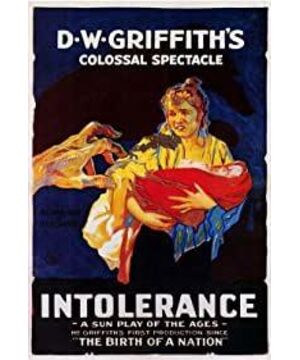Eisenstein criticized Griffith's obsession with the concept of parallel montages. Consider "Party and Diversity," which consists of four cross-cut stories, a narrative structure that occasionally returns to the single image of the mother's cradle. These four stories of parallel development finally converge in an epilogue that is presented as a Christian miracle of some sort of dissolution and harmony. Eisenstein criticized Griffith's concept of parallel montages for attempting to The archetypal or mystical image of the unceasingly shaking cradle connects four distinct historical stories. This allegorical image fails to connect the four different stories, because the cradle is not enough to create a meaningful relationship between the stories. The symbolism fails to reach the heights of generalization or abstraction, it remains at the level of tedious realism. More generally, Eisenstein argues that Griffith's montage of parallels is underpinned by a false humanism: the parallels actually conflict with each other.
View more about Intolerance reviews










